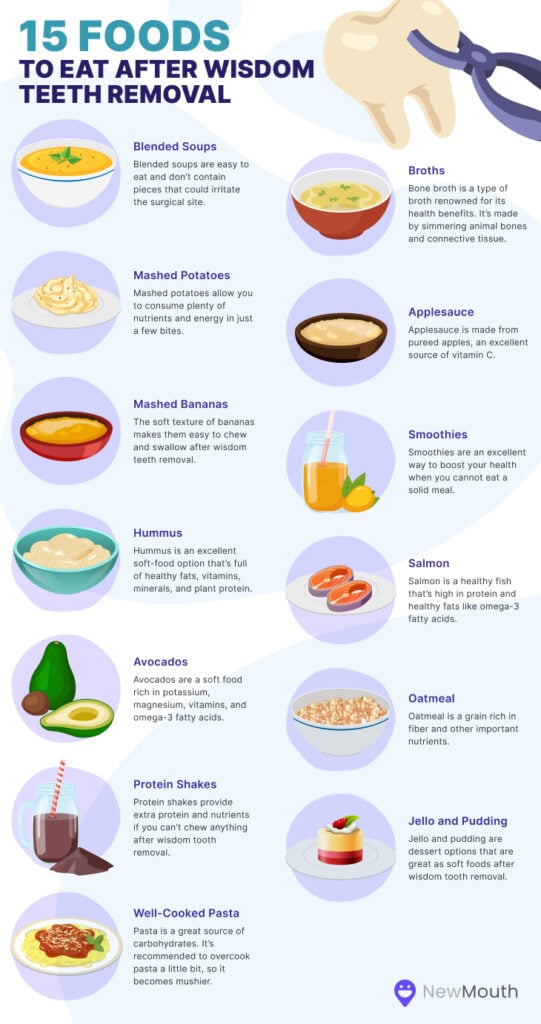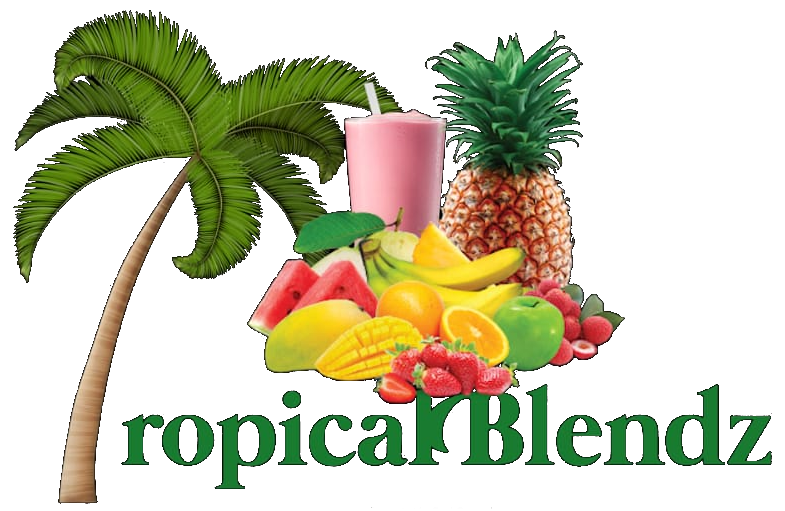
Introduction
Importance Of Following Dietary Guidelines After Tooth Extraction
Following proper dietary guidelines after tooth extraction is crucial for promoting optimal healing, reducing discomfort, and minimizing the risk of complications. By making informed food choices and adopting a soft and nutritious diet, patients can support the healing process and ensure a smooth recovery.
Explanation Of Why Juice Consumption Is A Concern
Juice consumption, especially acidic ones like orange juice, should be avoided for at least a few days after oral surgery. The acidic nature of juices can potentially irritate the extraction site and hinder the healing process. It is recommended to replace acidic juices with other beverages such as water, herbal tea, or diluted fruit juices.
Here are a few reasons why consuming acidic juices should be avoided after tooth extraction:
- Irritation: Acidic juices can cause irritation and discomfort in the extraction site, which can result in extended healing time.
- Delayed healing: The acidity in juices may interfere with the formation of blood clots and delay the healing process.
- Increased risk of infection: Acidic juices can create an environment conducive to bacterial growth, increasing the risk of infection in the extraction site.
- Discomfort: Drinking acidic juices may cause a stinging or burning sensation in the mouth, leading to discomfort and difficulty in eating or drinking.
To promote optimal healing, it is best to consume soft foods that are easy to chew and won’t irritate the extraction site. Avoiding acidic juices and opting for alternatives like water, herbal tea, or diluted fruit juices can help in ensuring a smooth recovery process without unnecessary complications. It is always important to follow the dietary guidelines provided by your dentist or oral surgeon to ensure a successful healing process after tooth extraction.
Immediate Post-procedure Instructions
Overview Of Immediate Post-operative Dietary Restrictions
Following tooth extraction, it is important to adhere to specific dietary instructions to facilitate proper healing and avoid complications. During the initial phase of recovery, a liquid diet is typically recommended to minimize strain on the surgical site. This involves consuming foods and beverages that are easy to swallow and do not require extensive chewing.
Emphasis On The Need For A Liquid Diet During The First 24 Hours
In the first 24 hours after surgery, it is crucial to stick to a liquid diet. This allows the surgical site to remain undisturbed, promoting blood clot formation and reducing the risk of complications. Here are some options that can be incorporated into a liquid diet:
- Bouillon
- Warm broth
- Smooth pureed soups
- Smoothies
- Milkshakes
- Greek yogurt
- Creamy peanut butter
- Nutritional supplement drinks (Ensure, Boost, Carnation, Glucerna)
- Pudding
- Sherbet
It is important to note that the use of a straw should be avoided for the first 48 hours following wisdom teeth extraction. Straw usage can create a suction vacuum inside the mouth, potentially dislodging the forming blood clot. This can lead to a condition known as dry socket, which can cause severe pain and delay the healing process.
By following these dietary guidelines and consuming a liquid diet in the first 24 hours after tooth extraction, individuals can support proper healing and minimize discomfort. It is important to consult with your dentist or oral surgeon for specific instructions tailored to your individual needs.
Liquid Diet: First 24 Hours After Surgery
Types Of Liquids Permissible During The Initial 24-hour Period
Following tooth extraction, it is crucial to adhere to specific dietary restrictions to promote healing and minimize complications. In the first 24 hours after surgery, a liquid diet is typically recommended to minimize strain on the surgical site. This involves consuming foods and beverages that are easy to swallow and do not require extensive chewing.
Examples Of Suitable Options Such As Bouillon And Smoothies
During the initial 24 hours, there are several liquids that can be included in a post-operative diet. These options include:
- Bouillon
- Warm broth
- Smooth pureed soups
- Smoothies
- Milkshakes
- Greek yogurt
- Creamy peanut butter
- Nutritional supplement drinks (Ensure, Boost, Carnation, Glucerna)
- Pudding
- Sherbet
It is important to note that using a straw should be avoided for the first 48 hours after wisdom teeth extraction. This is because straw usage can create a suction vacuum inside the mouth, which may dislodge the forming blood clot. This can lead to a condition known as dry socket, causing severe pain and delaying the healing process.
By adhering to these dietary guidelines and consuming a liquid diet in the first 24 hours after surgery, individuals can support proper healing and minimize discomfort. It is essential to consult with your dentist or oral surgeon for specific instructions tailored to your individual needs.
Please note that this information is provided as a general guideline, and it is important to follow the specific instructions given by your dental professional for your unique situation.

Precautions To Take While Consuming Liquids
Reasons To Avoid Using A Straw Or Smoking
Using a straw or smoking after a tooth extraction can increase the risk of complications and delay the healing process. Here’s why it’s important to avoid these habits during the initial recovery period:- Using a straw creates suction in the mouth, which can dislodge the forming blood clot. This can lead to dry socket, a painful condition that can significantly prolong the healing process.- Smoking introduces harmful chemicals and heat into the mouth, which can impair the healing process and increase the likelihood of infection.
Explanation Of The Risk Of Dislodging Blood Clots
After tooth extraction, blood clots form in the extraction site to protect and heal the underlying bone and tissue. Dislodging these blood clots can lead to complications, such as dry socket. Here’s why it’s important to protect the blood clots:- Blood clots provide a barrier against bacteria and other contaminants, reducing the risk of infection.- Blood clots promote the formation of new tissue and blood vessels, aiding in the healing process.- Dislodged blood clots can expose nerve endings and bone, leading to intense pain and delayed healing.
Following your dentist or oral surgeon’s instructions, which may include avoiding hot liquids and consuming a liquid diet during the first 24 hours, is essential for promoting proper healing and minimizing discomfort. Adhering to these precautions and understanding the reasons behind them can help you have a smoother recovery after a tooth extraction.
Precautions to Take While Consuming Liquids
Reasons to avoid using a straw or smoking
Using a straw or smoking after a tooth extraction can increase the risk of complications and delay the healing process. It is important to understand the reasons behind avoiding these habits during the initial recovery period.
- Using a straw creates suction in the mouth, which can dislodge the forming blood clot. This can lead to dry socket, a painful condition that can significantly prolong the healing process.
- Smoking introduces harmful chemicals and heat into the mouth, which can impair the healing process and increase the likelihood of infection.
Explanation of the risk of dislodging blood clots
After a tooth extraction, blood clots form in the extraction site to protect and heal the underlying bone and tissue. Dislodging these blood clots can lead to complications, such as dry socket. Understanding the importance of protecting the blood clots is vital.
- Blood clots provide a barrier against bacteria and other contaminants, reducing the risk of infection.
- Blood clots promote the formation of new tissue and blood vessels, aiding in the healing process.
- Dislodged blood clots can expose nerve endings and bone, leading to intense pain and delayed healing.
Following the instructions provided by your dentist or oral surgeon, which may include avoiding hot liquids and consuming a liquid diet during the first 24 hours, is essential for promoting proper healing and minimizing discomfort.
Soft Food Diet: Transitioning from Liquids
Explanation of when to start incorporating soft foodsAfter the initial day of consuming only liquids, you can gradually start incorporating soft foods into your diet. The exact timing may vary depending on the individual and the complexity of the extraction procedure. It is best to consult with your dental team for specific instructions.
Grocery list of recommended soft foods for recoveryWhen transitioning to a soft food diet after a tooth extraction, consider including the following options:
- Mashed potatoes
- Yogurt
- Applesauce
- Scrambled eggs
- Smoothies
- Oatmeal
- Cottage cheese
- Soup (strained or blended)
- Cooked vegetables (mashed or pureed)
- Pudding or gelatin
These soft foods can provide essential nutrients while minimizing discomfort during the first few days of recovery. Remember to take small, manageable bites and avoid any foods that are hard, crunchy, or require excessive chewing.
By gradually introducing soft foods, you can ease your way back into a regular diet. It is important to listen to your body, follow any additional guidelines provided by your dental team, and maintain good oral hygiene for a successful recovery after a tooth extraction.
Benefits Of Soft Foods During Healing
Advantages Of Consuming Soft Foods For Proper Healing:
- Soft foods require less biting and chewing, reducing discomfort in the extraction area.- They provide essential nutrients to support the healing process.- Soft foods are easier to consume and do not put strain on the healing site.- They minimize the risk of complications such as dislodging blood clots and developing dry socket.- Soft foods help maintain good oral hygiene by avoiding potential damage to the extraction site.
Nutritional Considerations When Choosing Soft Foods:
- Opt for nutrient-rich options like mashed or pureed fruits and vegetables, which provide vitamins and minerals necessary for healing.- Include sources of protein, such as yogurt, scrambled eggs, or cottage cheese, to support tissue repair.- Incorporate soups and smoothies made with wholesome ingredients for added nourishment.- Choose soft foods that are low in added sugars and avoid sticky or sugary foods that could promote bacterial growth.- Consider incorporating fiber-rich foods like oatmeal or cooked vegetables to support healthy digestion during recovery.
Remember to consult with your dental team for specific guidelines on when to start incorporating soft foods into your diet after tooth extraction. Gradually introduce soft foods and listen to your body’s cues to avoid discomfort. Taking precautions like avoiding the use of straws or smoking is essential to promote proper healing and minimize complications. Follow the recommendations provided by your dentist or oral surgeon, maintain good oral hygiene, and have regular check-ups to ensure a successful recovery.

Best Practices For Eating Soft Foods
Tips On How To Eat Soft Foods Comfortably And Safely
When consuming soft foods to aid in the healing process after wisdom tooth removal, it is important to follow these best practices:- Choose soft foods that are easy to swallow and do not require excessive chewing.- Take small bites and chew slowly to prevent discomfort or irritation to the extraction site.- Avoid extremely hot or cold foods as they can cause sensitivity or pain.- Maintain good oral hygiene by rinsing your mouth with saltwater solution after eating to prevent infection and promote healing.- Use proper utensils, such as a spoon, to ensure safe and effective consumption of soft foods.- Avoid using straws, as the suction created can dislodge blood clots and lead to complications.
Spoon Usage And Chewing Techniques
- When using a spoon to eat soft foods, take small spoonfuls and gently guide the food toward the back of your mouth, avoiding the extraction sites.- Avoid pushing or pressing the spoon directly on the extraction site to prevent disruption of the healing process.- Chew slowly and carefully, ensuring that the food is thoroughly broken down before swallowing.- If you experience any pain or discomfort while eating, consider pureeing or blending your food to make it easier to consume.
By following these best practices and using appropriate utensils, you can safely and comfortably consume soft foods during your recovery period after wisdom tooth removal. Remember to listen to your body and consult with your dental team for any specific guidelines or concerns regarding your post-operative diet.
Best Practices For Eating Soft Foods
Tips On How To Eat Soft Foods Comfortably And Safely
When consuming soft foods to aid in the healing process after wisdom tooth removal, individuals should follow these best practices:- Choose soft foods that are easy to swallow and do not require excessive chewing.- Take small bites and chew slowly to prevent discomfort or irritation to the extraction site.- Avoid extremely hot or cold foods as they can cause sensitivity or pain.- Maintain good oral hygiene by rinsing the mouth with a saltwater solution after eating to prevent infection and promote healing.- Use proper utensils, such as a spoon, to ensure safe and effective consumption of soft foods.- Avoid using straws, as the suction created can dislodge blood clots and lead to complications.
Spoon Usage And Chewing Techniques
- When using a spoon to eat soft foods, individuals should take small spoonfuls and gently guide the food toward the back of the mouth, avoiding the extraction sites.- Avoid pushing or pressing the spoon directly on the extraction site to prevent disruption of the healing process.- Chew slowly and carefully, ensuring that the food is thoroughly broken down before swallowing.- If any pain or discomfort is experienced while eating, consider pureeing or blending the food to make it easier to consume.
By following these best practices and using appropriate utensils, individuals can safely and comfortably consume soft foods during the recovery period after wisdom tooth removal. It is important to listen to the body and consult with the dental team for any specific guidelines or concerns regarding the post-operative diet.
Long-term Dietary Considerations
Guidelines For Gradually Reintroducing Solid Foods
Your dentist or oral surgeon will provide specific instructions on when it is safe to reintroduce solid foods into the diet after a tooth extraction. However, as a general guideline:- Start with soft solid foods that are easy to chew, such as scrambled eggs or well-cooked vegetables.- Gradually increase the texture and hardness of foods over time.- Avoid hard or sticky foods that can potentially dislodge blood clots or cause damage to the extraction site.
Importance Of Avoiding Hard Or Chewy Foods
It is important to avoid hard or chewy foods during the healing process as they can:- Cause irritation or pain to the extraction site.- Disrupt the formation of blood clots, leading to complications such as dry socket.- Delay the healing process.
By following the recommended guidelines and avoiding hard or chewy foods, individuals can promote proper healing and minimize the risk of complications after tooth extraction. Always consult with the dental team for personalized advice and recommendations based on the specific circumstances of the extraction procedure.
Best Practices For Eating Soft Foods
Tips On How To Eat Soft Foods Comfortably And Safely
When consuming soft foods to aid in the healing process after tooth extraction, individuals should follow these best practices:
- Choose soft foods that are easy to swallow and do not require excessive chewing.
- Take small bites and chew slowly to prevent discomfort or irritation to the extraction site.
- Avoid extremely hot or cold foods as they can cause sensitivity or pain.
- Maintain good oral hygiene by rinsing the mouth with a saltwater solution after eating to prevent infection and promote healing.
- Use proper utensils, such as a spoon, to ensure safe and effective consumption of soft foods.
- Avoid using straws, as the suction created can dislodge blood clots and lead to complications.
Spoon Usage And Chewing Techniques
- When using a spoon to eat soft foods, individuals should take small spoonfuls and gently guide the food toward the back of the mouth, avoiding the extraction sites.
- Avoid pushing or pressing the spoon directly on the extraction site to prevent disruption of the healing process.
- Chew slowly and carefully, ensuring that the food is thoroughly broken down before swallowing.
- If any pain or discomfort is experienced while eating, consider pureeing or blending the food to make it easier to consume.
By following these best practices and using appropriate utensils, individuals can safely and comfortably consume soft foods during the recovery period after tooth extraction. It is important to listen to the body and consult with the dental team for any specific guidelines or concerns regarding the post-operative diet.
Long-term Dietary Considerations
Guidelines For Gradually Reintroducing Solid Foods
Your dentist or oral surgeon will provide specific instructions on when it is safe to reintroduce solid foods into the diet after a tooth extraction. However, as a general guideline:
- Start with soft solid foods that are easy to chew, such as scrambled eggs or well-cooked vegetables.
- Gradually increase the texture and hardness of foods over time.
- Avoid hard or sticky foods that can potentially dislodge blood clots or cause damage to the extraction site.
Importance Of Avoiding Hard Or Chewy Foods
It is important to avoid hard or chewy foods during the healing process as they can:
- Cause irritation or pain to the extraction site.
- Disrupt the formation of blood clots, leading to complications such as dry socket.
- Delay the healing process.
By following the recommended guidelines and avoiding hard or chewy foods, individuals can promote proper healing and minimize the risk of complications after tooth extraction. Always consult with the dental team for personalized advice and recommendations based on specific circumstances.
Conclusion
Reiteration Of The Significance Of Following Post-operative Dietary Guidelines
Following proper post-operative dietary guidelines is essential for ensuring adequate healing and minimizing the risk of complications after tooth extraction. By sticking to soft foods initially and gradually reintroducing solid foods, individuals can support the healing process and protect the extraction site.
Importance Of Consulting With A Healthcare Professional For Personalized Advice
It is crucial to consult with a healthcare professional, such as a dentist or oral surgeon, for personalized advice and recommendations regarding post-operative dietary restrictions and guidelines. They can provide specific instructions tailored to each individual’s unique situation and ensure the best possible outcome for recovery.
Remember that this information is intended as general guidance and should not replace professional medical advice.
Frequently Asked Questions: Can I Drink Juice After Tooth Extraction?
Q: Can I drink juice after tooth extraction?
A: Yes, you can drink juice after tooth extraction, but it’s important to follow post-procedure dietary guidelines.
Q: What are the dietary guidelines I should follow after tooth extraction?
A: After a tooth extraction, it is important to follow a soft food diet for a few days. This will help promote healing and prevent any complications.
Q: Why is it important to follow a soft food diet after a tooth extraction?
A: Following a soft food diet helps to minimize discomfort and reduce the risk of damaging the surgical area. It also allows the extraction site to heal properly.
Q: What types of juice can I drink after tooth extraction?
A: It is best to choose juices that are smooth and without any pulp or chunks that could irritate the surgical area. Clear fruit juices, such as apple, grape, or cranberry juice, are good options.
Q: Should I drink cold or room temperature juice after a tooth extraction?
A: It is recommended to drink juice at room temperature or slightly chilled. Avoid very cold or hot beverages as extreme temperatures may cause discomfort or sensitivity.
Q: How soon after the tooth extraction can I start drinking juice?
A: It is generally recommended to wait until the bleeding has stopped and the initial healing process has begun before consuming any liquids, including juice. This usually takes around 24 hours.
Q: Are there any juices I should avoid after tooth extraction?
A: Yes, there are certain juices to avoid after tooth extraction. It is best to steer clear of acidic juices, such as orange or lemon juice, as they can irritate the surgical area and might cause discomfort.
Q: How should I drink juice after tooth extraction?
A: When drinking juice after tooth extraction, it is important to avoid using a straw as the suction created can dislodge the blood clot and delay the healing process. Instead, sip the juice slowly and carefully.
Q: Can I drink juice immediately after taking pain medication?
A: It is recommended to wait about 30 minutes after taking pain medication before consuming any liquids, including juice. This allows the medication to take effect and minimizes the risk of disturbing the surgical site.
Q: Can I drink juice with a straw after the initial healing period?
A: Once the initial healing period is complete, it is generally safe to use a straw. However, it is still recommended to exercise caution and sip beverages slowly to prevent any discomfort or complications.
Remember, it is always best to consult with your dentist or oral surgeon for specific recommendations regarding your diet and post-tooth extraction care.

Tropical Blendz Café and Juice Bar is a safe and clean environment where we provide immune-boosting natural juices, smoothies, shakes, authentic Caribbean cultural foods, and much more. Our juices are made from all-natural, unique fruits, vegetables, and herbs.